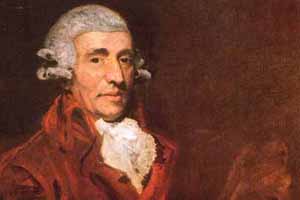Like hurricanes, tornadoes correspond to a violent meteorological phenomenon. They appear as powerful whirlwinds in a funnel shape; they extend from an enormous and dense cloud down to the ground, tearing down everything in their path. The windy air mixes with earth and waste and if it is high intensity, it can even pull trees up by the roots and carry along cars, animals and large structures (such as houses and bridges).
Generally, they move in a horizontal manner from the southeast to the northeast, moving at approximately 50 km/h; some move more slowly, while others reach velocities of 100 km/h or more. The average path of a tornado is 400 meters wide and a few kilometers long. Some exceptional paths 1.6 kilometers wide and 480 kilometers long have been registered.
It is possible to distinguish three parts to every tornado: the mother cloud, the funnel and the vortex. The mother cloud, as its name indicates, is the place where the tornado is born. It corresponds to a white or grey storm cloud (cumulonimbus) of large size.
The funnel is located below the mother cloud. It is a column of air formed in the upper part of a tornado which can acquire a darker tone of color due to the waste absorbed in its path. Finally, we can identify the vortex, the part of the tornado closest to the ground which is characterized by having strong winds swirling in a spiral shape.
Formation of a tornado
Usually, tornadoes are produced in the transition zone between masses of polar and tropical air, between 20º and 50º of latitude, on both sides of the Equator. They are rarely formed at latitudes greater than 60º, where the air does not provide the necessary humidity or temperature. The same applies to the equatorial zone, where the atmosphere doesn’t possess enough instability to develop a storm of such magnitude.
In addition, it has been established that the majority of tornadoes occur in the agricultural zones of our planet, as these are sectors where it’s possibly to find the precise humidity and temperature necessary, above all during spring and summer.
Tornadoes are formed when a rising current of hot air in the interior of a cumulonimbus is pulled in a revolving manner through the winds of the upper part of the cloud. The meeting causes the air to rotate in the direction of the hands of a clock in the southern hemisphere, and in the opposite direction in the northern hemisphere.
The air circulation causes pressure to lower in the central zone of the storm, creating a column of air. This central column progressively descends from the cloud until reaching the ground, to continue its path in a horizontal manner.
Depending on wind intensity, it’s possible for a tornado to produce the demolition of roofs and overturn large automobiles.
Frequency
Although tornadoes can be produced during any time of the year, a marked seasonal variation can be observed that differs in countries and places, their maximum occurrence being during the months of June, July and August.
In the first part of the year, March and April, there are more currents near the coast of the Gulf of Mexico. As the year goes on, the place of the greatest tornado formation moves more towards the north of the United States. The reason that explains this displacement relates to the movement of air masses in that direction.
Tornadoes can be produced at any time of day, but with the greatest frequency between 2 and 8pm, as during this time the Earth’s surface temperature increases. The heat contributes to atmospheric instability and the formation of storms that generally lead to tornado formation.
Fujita Scale
There are various scales used worldwide to measure the intensity of a tornado. However, the one most used is called the Fujita Scale, which classifies this meteorological event according to the damage caused by the wind in its passing, from the lightest to the most severe. It is used once the tornado has occurred, as it is impossible to predict its force beforehand.
The measurement scale was created in the year 1971 by the Chicago University professor Theodore Fujita, who dedicated a great part of his life to revealing the mysteries surrounding this marvelous natural phenomenon.
Relating Beaufort’s wind scale (which estimates the velocity of this element) to sound velocity, he created a total of 13 categories to classify the damage caused. In general, only six are used, which classify from 0 to 5 and are preceded by an F in honor of their author.
These are:
– F0: with winds whose velocity goes from 64 to 116 km/h. This is the least serious tornado and causes only minor damage, such as the destruction of some tree branches.
– F1: this includes tornadoes with winds that go from 117 to 180 km/h. This greater intensity causes the displacement of mobile homes and some small vehicles, as well as the lifting of shingles.
– F2: this category corresponds to when intensity reaches between 181 and 253 km/h. The damage is considerable; many roofs are completely torn away, and large trees can be divided into pieces.
– F3: these are the tornadoes that reach between 254 and 332 km/h. Roads suffer serious damage and it’s probable that heavy cars and trains are thrown into the air.
– F4: if wind reaches velocities between 333 and 418 km/h, solidly constructed walls can be almost immediately knocked down. In addition, large objects are literally pulverized, and freight vehicles are also lifted by winds.
– F5: tornados belonging to this category reach between 420 and 512 km/h. It is probable that both houses and buildings of solid construction are torn from their foundations, thrown into the air and pulverized. A tornado of these characteristics has never been recorded, but according to tests done in simulators, it has been confirmed that their magnitude would be comparable to that of an atomic bomb.
Associated phenomena
Along their path, tornadoes and hurricanes can be accompanied by other atmospheric phenomenon, such as strong rains, lightning bolts and thunder.
Lightning bolts, which originate in the interior of large cumulonimbus storm clouds, can have a negative or positive charge. These charges come from the collisions produced between ice crystals or hail found in the cloud.
In the presence of hot air masses (denser than the atmosphere), these charges separate and the positive charges accumulate in the upper part of the cloud.
Negative charges head toward the base, attracted by the positive charges on the earth’s surface; the difference between these generally causes the cloud’s discharge towards Earth. It is estimated that the electrical potential of these discharges is enormous, as it reaches 100 million volts (a lamp has 150 volts).
Three types of bolts can be distinguished. Their main difference is based on the path taken by the electrical charges they cause. There are cloud-air types in which electricity moves from the cloud towards a mass of oppositely-charged air, cloud-cloud types, in which the lighting can be produced on the interior of a cloud or between two different charges, and finally, there are cloud-ground types, which are characterized by the fact that the negative charges on the interior of the cloud are attracted by the ground’s positive charge.
Thunder corresponds to the roar produced by the air upon expanding very rapidly and generating shock waves as it heats up.








 Muere Joseph Haydn
Muere Joseph Haydn